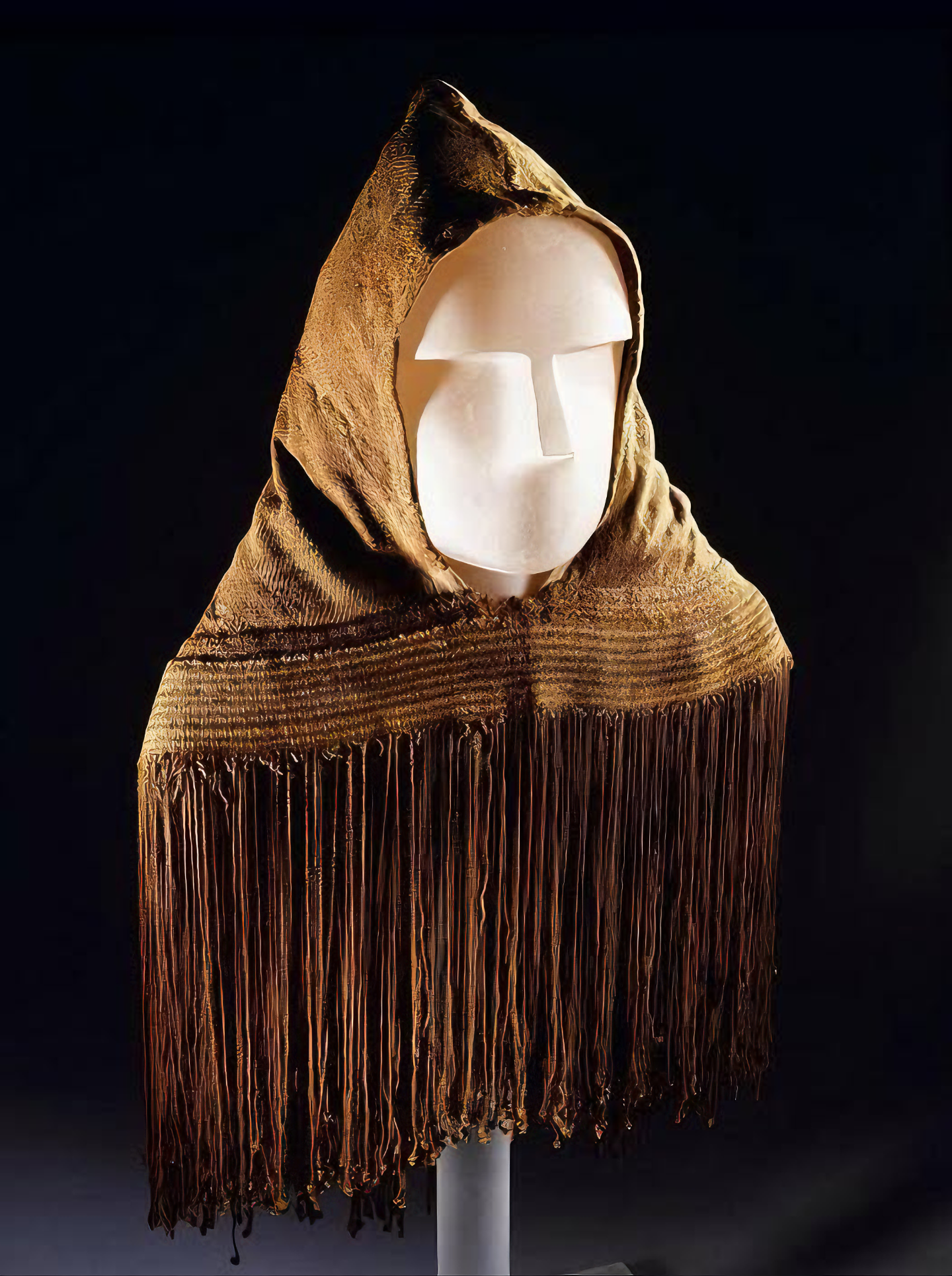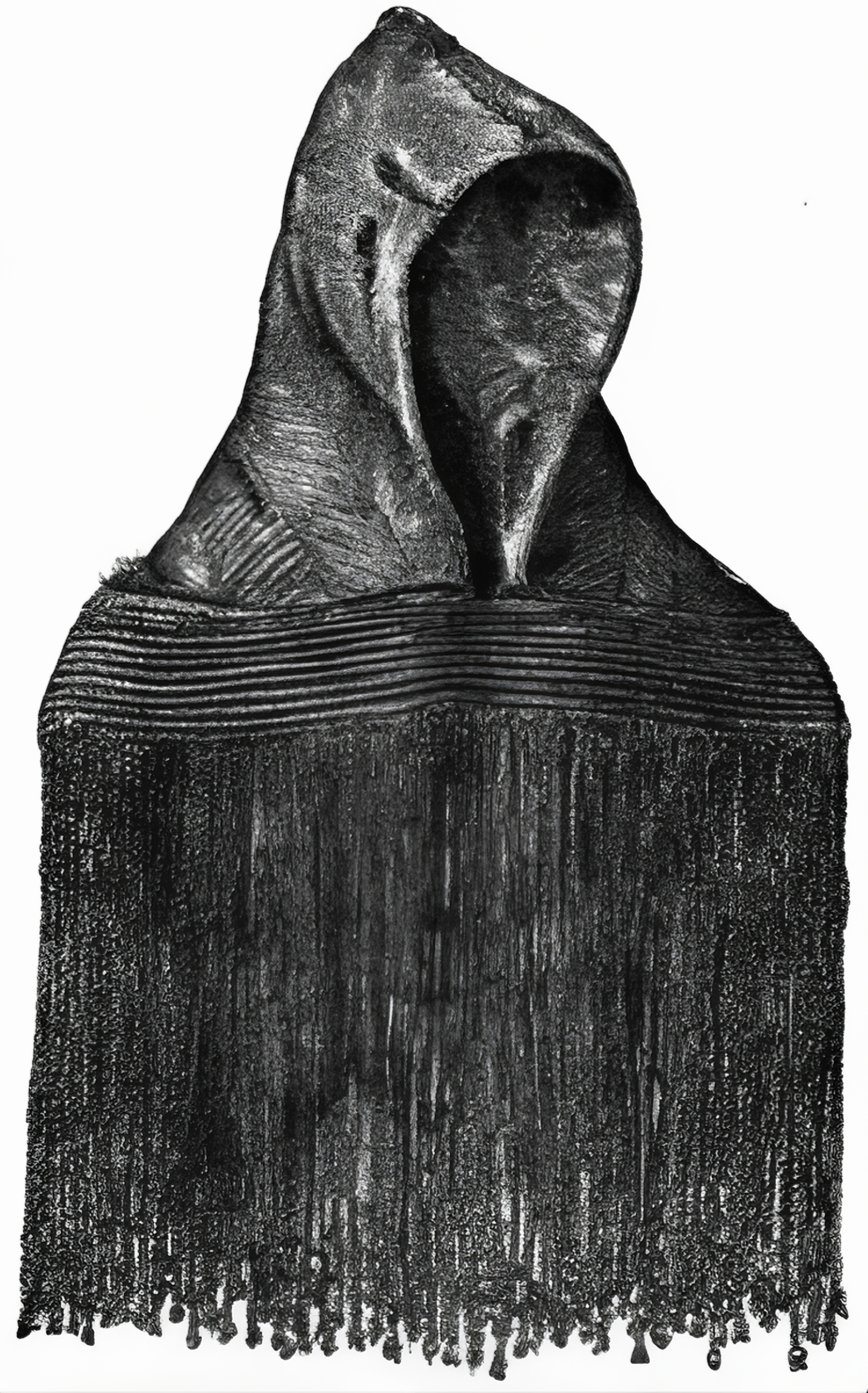
Discovered in a bog at St. Andrew’s parish on Orkney in 1867, the unique Iron Age “Orkney Hood’
1867년 오크니Orkney에 있는 세인트 앤드류 교구 St. Andrew’s parish 늪지bog에서 발견한 독특한 철기시대 오크니 후드Orkney Hood다.
복잡한 직조weaving 및 프린지fringe가 있는 이중 정제 직조 밴드double tablet woven bands가 있다.
양모wool는 염색하지 않았다.
저 오크니라는 데가 어딘지 두둘겨 봤더니 세상에 나
The Orkney Museum · Broad St, Kirkwall KW15 1DH 영국
★★★★★ · 박물관
www.google.com
영국 북부 스코틀랜드, 개중에서도 다시 북해 쪽으로 올라간 섬이다.
저길 언제 한 번 가 본단 말인가?
저 유물은 더 찾아 보니 저곳 Orkney Museum이라는 데 있다 하는데, 그 박물관에서 제공하는 추가 정보를 보니 아래와 같다.
Orkney’s Iron Age Hood
The woollen hood found in a Tankerness peat-moss in the 19th century has been found to date to the Late Iron Age, thanks to carbon dates obtained by the National Museum of Scotland. It seems to have been made sometime between the third and seventh centuries AD.
The replica Orkney Hood in the Orkney Museum
The head-covering part of the hood is shaped like an old-fashioned pixie hood, but it is joined on to a yoke that covers the wearer’s shoulders, and it has a long twisted fringe. Further research by experimental archaeologist Jacqui Wood has revealed fascinating details.

오크니 철기 시대 훅, 곧 두건 모양 옷가지는 19세기 탱커니스 피트모스Tankerness peat-moss에서 발견된 모직 후드로 스코틀랜드 국립 박물관에서 얻은 탄소 연대 측정 덕분에 후기 철기 시대까지 거슬러 올라가는 것으로 밝혀졌다고.
peat-moss라 했으니, 이탄층 습지에서 발굴된 것인 듯하다.
서기 3~7세기 사이에 제작된 것으로 본다고.
맨 앞에 제시한 후크는 상태로 보아 복제품일 것이다.
후드 머리를 덮는 부분은 옛날 픽시 후드pixie hood 모양이지만 착용자 어깨를 덮는 요크yoke에 연결되어 있으며 길게 꼬인 술fringe이 있다.
실험 고고학자 Jacqui Wood의 추가 연구에서는 흥미로운 세부 사항이 밝혀졌다고.
The hood is small and was probably made for a child of about eight or nine. The main part of the fabric is a twill weave, but the diagonal line of the twill changes direction irregularly. Careful measurements showed that at each direction change, the number of threads per inch also changed. It seems that the cloth was being woven with hand-spun yarn which varied in thickness, and the changes in direction were being used to mask these variations.
The fringe is part of a tablet-woven braid, and both the cloth and the braid must have come from other, better-made garments which must have been cut up to make this child’s hood. One imagines that the child then left the hood in the hill – maybe they were working peats? Or would the child have been herding animals? Or maybe it blew off the washing line – maybe at Minehowe? The possibilities are endless! , but it is joined on to a yoke that covers the wearer’s shoulders, and it has a long twisted fringe. Further research by experimental archaeologist Jacqui Wood has revealed fascinating details.
후드는 작으며 아마도 8~9세 정도 어린이용으로 제작되었을 것이라고. 원단 주요 부분은 능직twill weave인데, 능직의 사선diagonal line of the twill이 불규칙하게 방향을 바꾼다.
주의 깊게 측정한 결과, 각 방향이 바뀔 때마다 인치당 스레드threads 숫자도 바뀌는 것으로 나타났다.
천은 굵기가 다양한 손으로 짠 실로 짰다고 생각되며, 방향 변화는 이러한 변화를 가리기 위해 사용된 것 같다고.
술fringe은 서판으로 엮은 끈 tablet-woven braid 일부이며, 천과 끈은 모두 이 아이의 두건을 만들기 위해 잘라낸 다른 더 나은 옷에서 나온 것임에 틀림없다.
아마도 저걸 짜고 쓴 사람들은 이탄peats 채굴 일을 하고 있었을 것이다.
아니면 그 아이가 동물을 몰고 다녔을 지도 모르고, 또 세탁 라인이 터졌을 수도 있다.
어쩌다 저게 저 땅에 남았는지 궁금증을 자아낸다.
'유물톱아보기' 카테고리의 다른 글
| 죽음과 부활의 이중성 오시리스 (0) | 2025.02.25 |
|---|---|
| 점토판에 쓴 바빌론 편지, 왕의 명령이 먹히지 않는다 (0) | 2025.02.25 |
| 물고기 안에서 뛰어노는 당삼채 컵 (0) | 2025.02.22 |
| 눈에서 광채를 발하는 고대 이집트 서기관 (0) | 2025.02.22 |
| 정교하기 짝이 없는 에트루리아 청동 손거울 (0) | 2025.02.22 |



